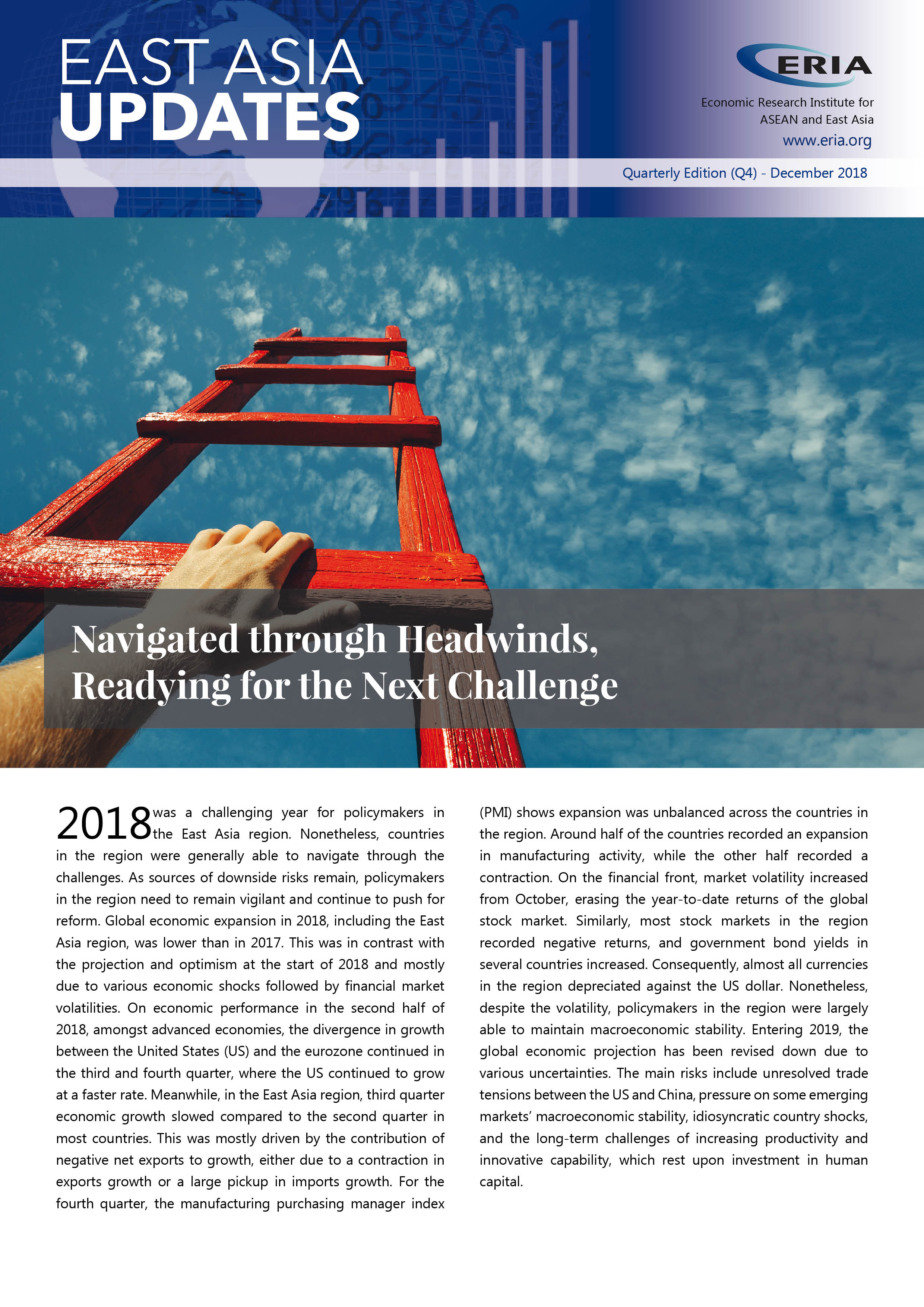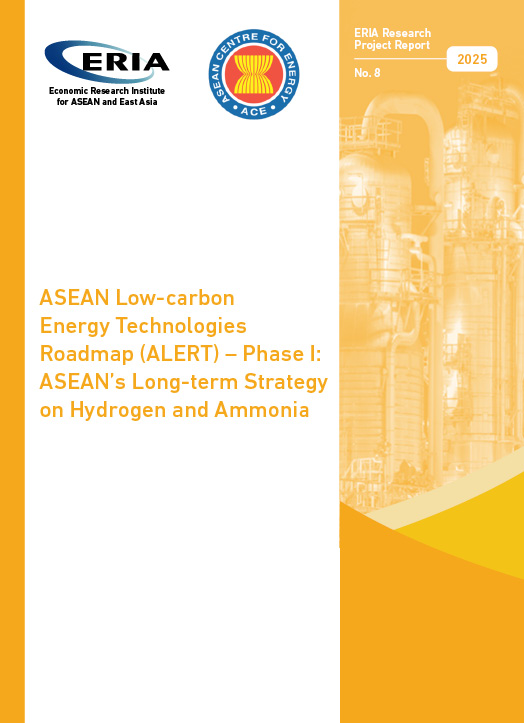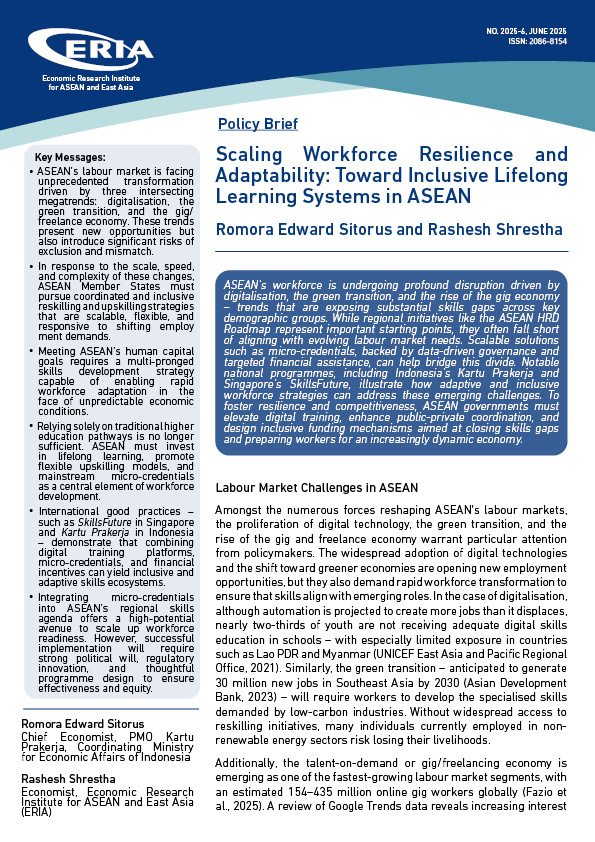East Asia Updates | Quarterly Edition - December 2018

Print Article:
2018 was a challenging year for policymakers in the East Asia region. Nonetheless, countries in the region were generally able to navigate through the challenges. As sources of downside risks remain, policymakers in the region need to remain vigilant and continue to push for reform. Global economic expansion in 2018, including the East Asia region, was lower than in 2017. This was in contrast with the projection and optimism at the start of 2018 and mostly due to various economic shocks followed by financial market volatilities. On economic performance in the second half of 2018, amongst advanced economies, the divergence in growth between the United States (US) and the eurozone continued in the third and fourth quarter, where the US continued to grow at a faster rate. Meanwhile, in the East Asia region, third quarter economic growth slowed compared to the second quarter in most countries. This was mostly driven by the contribution of negative net exports to growth, either due to a contraction in exports growth or a large pickup in imports growth.
For the fourth quarter, the manufacturing purchasing manager index (PMI) shows expansion was unbalanced across the countries in the region. Around half of the countries recorded an expansion in manufacturing activity, while the other half recorded a contraction. On the financial front, market volatility increased from October, erasing the year-to-date returns of the global stock market. Similarly, most stock markets in the region recorded negative returns, and government bond yields in several countries increased. Consequently, almost all currencies in the region depreciated against the US dollar. Nonetheless, despite the volatility, policymakers in the region were largely able to maintain macroeconomic stability. Entering 2019, the global economic projection has been revised down due to various uncertainties. The main risks include unresolved trade tensions between the US and China, pressure on some emerging markets’ macroeconomic stability, idiosyncratic country shocks, and the long-term challenges of increasing productivity and innovative capability, which rest upon investment in human capital.
Download the Quarterly Edition - December 2018




